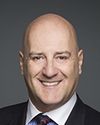Do you know if your provincial counterparts are using scanners in their institutions?
Evidence of meeting #100 for Public Safety and National Security in the 42nd Parliament, 1st Session. (The original version is on Parliament’s site, as are the minutes.) The winning word was scan.
A recording is available from Parliament.




